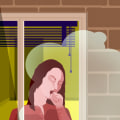Construction dust can be a persistent issue after a renovation or remodeling project, coating surfaces and lingering in the air long after the work is done. This dust, often made up of tiny particles from drywall, concrete, wood, and insulation, can not only make a space feel unfinished but also pose health risks if left unaddressed. Cleaning up construction dust with the help of Clean Group Mascot, NSW requires more than a quick sweep, as fine particles can easily settle into fabrics, ventilation systems, and hard-to-reach areas. A thorough approach is essential to restore a fresh, clean environment and make the room ready for regular use. This guide offers a step-by-step approach to effectively getting rid of construction dust with the assistance of Clean Group Mascot, NSW, ensuring your newly completed space is safe, dust-free, and comfortable. Construction dust can be a persistent issue after a renovation or remodeling project, coating surfaces and lingering in the air long after the work is done. This dust, often made up of tiny particles from drywall, concrete, wood, and insulation, can not only make a space feel unfinished but also pose health risks if left unaddressed. Cleaning up construction dust with the help of Clean Group Mascot, NSW requires more than a quick sweep, as fine particles can easily settle into fabrics, ventilation systems, and hard-to-reach areas. A thorough approach is essential to restore a fresh, clean environment and make the room ready for regular use. This guide offers a step-by-step approach to effectively getting rid of construction dust with the assistance of Clean Group Mascot, NSW, ensuring your newly completed space is safe, dust-free, and comfortable.
Start by Ventilating the Room
The first step in tackling construction dust is to ventilate the room properly. Open all windows and doors to allow fresh air to circulate, helping to disperse airborne dust particles. If possible, place fans in the windows facing outward to push dust outside. This approach not only makes it easier to breathe while cleaning but also begins the process of reducing airborne particles. If you have an air purifier, consider placing it in the room to capture lingering dust from the air. Ventilation is especially important in areas prone to humidity, as dust combined with moisture can encourage mold growth, leading to potential issues that might later require services like mold remediation.
Use a Vacuum with a HEPA Filter
Vacuuming is a crucial step in removing construction dust, but it’s essential to use a vacuum equipped with a HEPA (High-Efficiency Particulate Air) filter. Regular vacuums may recirculate fine dust back into the air, whereas HEPA filters capture small particles, preventing them from escaping. Start by vacuuming floors, baseboards, and windowsills, moving slowly to capture as much dust as possible. Don’t forget to vacuum other surfaces, such as walls and ceilings, which can also accumulate dust during construction. Using a soft brush attachment will help you avoid scratching any newly painted or delicate surfaces. For the best results, empty the vacuum frequently to prevent dust buildup within the machine.
Wipe Down Surfaces with a Damp Cloth
After vacuuming, wipe down all surfaces with a damp microfiber cloth. A microfiber cloth is ideal because it traps dust particles rather than spreading them around, providing a thorough clean without scratching surfaces. Begin with higher surfaces, such as shelves, countertops, and ledges, and work your way down to lower surfaces and floors. Pay special attention to hard-to-reach areas, like corners and under furniture, where dust tends to accumulate. For particularly dusty areas, rinse the cloth regularly to avoid redistributing dust. Avoid using too much water, as excessive moisture can create streaks and may damage certain surfaces.
Clean Upholstery and Fabrics
Construction dust can settle deeply into fabrics and upholstery, so it’s important to clean these items thoroughly. If possible, remove and wash any curtains, cushion covers, and fabric decor items. For upholstered furniture that can’t be machine washed, use a vacuum with an upholstery attachment to remove dust. For added freshness, use a fabric-safe spray cleaner to help lift remaining dust particles. For carpets and rugs, vacuum them several times with a HEPA filter vacuum, and consider renting a carpet cleaner if necessary. This step not only removes dust from fabrics but also helps eliminate any construction odors that may linger.
Mop the Floors with Care
Mopping the floors is essential to remove any remaining dust, particularly after vacuuming and wiping down other surfaces. Use a damp mop rather than a wet one, as too much water can cause dust to clump and create a muddy residue. Microfiber mops are especially effective at capturing fine dust particles. Start in one corner of the room and work your way across, rinsing the mop frequently to avoid spreading dust. For hardwood or laminate floors, use a cleaner recommended by the manufacturer to avoid damaging the surface. If you’re dealing with tile floors, a mild solution of water and vinegar can help cut through stubborn dust and leave the surface spotless.
Change Air Filters and Clean Vents
Construction dust often spreads to the HVAC system, where it can accumulate in vents and filters. To prevent the dust from recirculating, replace your air filters immediately after completing the cleaning. This is particularly important if you have an HVAC system that runs frequently, as it can draw dust into the ducts and release it back into the room. Additionally, clean the air vents by removing the covers and vacuuming inside, or wipe them down with a damp cloth to capture any dust that may have settled during the construction. Changing air filters and cleaning vents ensures that your indoor air quality remains high and that dust does not continue to circulate in your freshly cleaned room. Construction dust often spreads to the HVAC system, where it can accumulate in vents and filters. To prevent the dust from recirculating, replace your air filters immediately after completing the cleaning. This is particularly important if you have an HVAC system that runs frequently, as it can draw dust into the ducts and release it back into the room. Additionally, clean the air vents by removing the covers and vacuuming inside, or wipe them down with a damp cloth to capture any dust that may have settled during the construction. Changing air filters and cleaning vents ensures that your indoor air quality remains high and that dust does not continue to circulate in your freshly cleaned room.
Finishing Touches and Preventive Measures
Once the room is dust-free, take preventive measures to keep it that way. Consider placing doormats or rugs near entry points to trap dust and dirt from shoes, and establish a regular cleaning schedule to maintain cleanliness. Using an air purifier with a HEPA filter in the room can also help trap any residual dust particles in the air, keeping the room fresher over time. This routine maintenance helps ensure that your new space stays clean, welcoming, and free from any harmful particles. By following these steps, you can effectively remove construction dust from a room, leaving it clean, healthy, and ready for everyday use.



